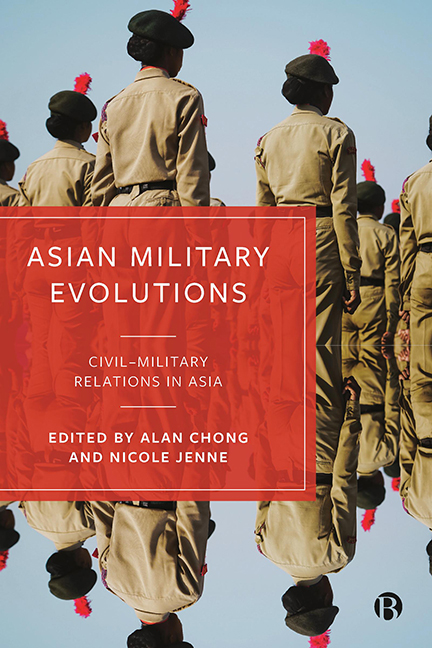Book contents
2 - Fostering Developmental Guardianship: The Case of Myanmar’s Tatmadaw
Published online by Cambridge University Press: 18 January 2024
Summary
On 1 February 2021, the Myanmar military (Tatmadaw) launched a coup against the civilian government that was led by the National League for Democracy (NLD) patron, Aung San Suu Kyi. The coup that occurred during the early period of the COVID-19 global outbreak has certainly tilted the civil–military balance in the country. Furthermore, the military coup confirmed the speculation about the military feeling uneasy towards its civilian counterpart. Prior to the coup, there had been several incidents that displayed the growing enmity of the military. The Tatmadaw immediately detained most of the senior NLD members, including Suu Kyi who was put under house arrest by the military. Soon after the coup, the military formed a caretaker government under the so-called State Administrative Council (SAC) in which General Min Aung Hlaing, the coup orchestrator and Tatmadaw commander, holds the Chair position (The Myanmar Times, 2021). The installation of the SAC has put the Tatmadaw back at the helm of Myanmar’s government.
The 2021 coup has mostly destroyed the political transition that was marked by the transfer of authority from a military-led government to a quasi-civilian government in 2011. General Tan Shwe, commander-in-chief of Myanmar’s Military (1992–2011), announced the disbandment of the State Peace and Development Council (SPDC) on 30 March 2011. Before it dispersed itself, the SPDC government held general elections in 2010 that were won by the Union Solidarity and Development Party (USDP), which allowed the party to form a majority government and installed former military general Thein Sein as president of the country (2011–16). The 2010 general elections marked a milestone for the so-called democratization, or what others might only see as a temporary transition, from direct to partial military rule in Myanmar. Robert Taylor (2013, p 400) described this reform as a window dressing that failed to bring real change, since the military still maintained significant political control. Such doubt was indeed materialized when the 2021 military takeover occurred.
Existing studies on the Tatmadaw’s continued domination after political transition mainly point at the military’s control over political liberalization as the enabling factor for the armed forces to maintain its strong political influence (Callahan, 2012; Macdonald, 2013; Croissant and Kamerling, 2013; Egreteau, 2016; Selth, 2018).
- Type
- Chapter
- Information
- Asian Military EvolutionsCivil-Military Relations in Asia, pp. 29 - 45Publisher: Bristol University PressPrint publication year: 2023

